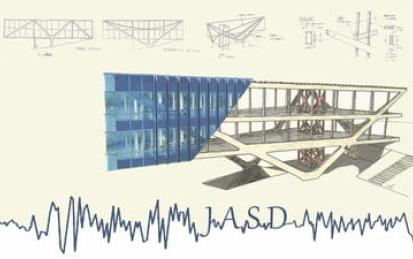

Our Courses

3D CAD Fundamental
There have many three-dimensional shape of the object in your brain that are wanted to share, but do not know how to express? How to "sketch" the three-dimensional image in your mind? 3D modeling technology can help us construct the most intuitive and understandable three-dimensional model. The use of floor plan interpret the three-dimensional object process-the most direct and effective expression of our ideas.
-
Course by

-
 Self Paced
Self Paced
-
 9 hours
9 hours
-
 English
English

Foundations of Public Health Practice: The Public Health Approach
The Public Health Approach course is the first instalment of the wider Foundations of Public Health Practice specialisation from Imperial College London's Global Master of Public Health (MPH). The scope and content of this course has been developed from the ground up by a combined team of academics and practitioners drawing on decades of real-world public health experience as well as deep academic knowledge.
-
Course by

-
 Self Paced
Self Paced
-
 13 hours
13 hours
-
 English
English

Japanese Architecture and Structural Design
In this revised course, fundamental and modern approaches to Japanese structural design will be explained using historical overviews and Tokyo-Tech’s campus buildings as case studies. Learners will be able to interpret and apply seismic design concepts like energy-dissipating braced frames, spine frames, seismic retrofit, seismic isolation and seismic design of spatial structures.
-
Course by

-
 Self Paced
Self Paced
-
 English
English

Volcanology field science and society
In this introductory course, you will use interactive technologies to learn the science of how volcanoes work and the skills of a field volcanologist. You will explore the intersection of field volcanology and society, by looking into cultural perspectives of volcanoes, hazard mapping and communication using examples in Aotearoa New Zealand and drawing on Mātauranga Māori (Māori knowledge).
-
Course by

-
 Self Paced
Self Paced
-
 English
English

SOLIDWORKS CAD Fundamentals
Start learning SOLIDWORKS 3D Computer-Aided Design (CAD) software today. We will discuss the fundamentals of sketching, features, parts, assemblies, and drawings. This is your chance to learn the best-in-class engineering design software application!
-
Course by

-
 Self Paced
Self Paced
-
 13
13
-
 English
English

Software Design as an Abstraction
The design step in developing software has some unique characteristics. First of all, it’s the only step where drawing pictures of things is the norm. Why is that? What do pictures do that other representations cannot do? Pictures have varying levels of detail; pictures have context. Pictures…paint a picture. Why are these things important? In this course, too, we begin looking at other disciplines (building architecture is a favorite one) for lessons on design.
-
Course by

-
 Self Paced
Self Paced
-
 16 hours
16 hours
-
 English
English

BigQuery Fundamentals for Snowflake Professionals
This course covers BigQuery fundamentals for professionals who are familiar with SQL-based cloud data warehouses in Snowflake and want to begin working in BigQuery. Through interactive lecture content and hands-on labs, you learn how to provision resources, create and share data assets, ingest data, and optimize query performance in BigQuery. Drawing upon your knowledge of Snowflake, you also learn about similarities and differences between Snowflake and BigQuery to help you get started with data warehouses in BigQuery.
-
Course by

-
 Self Paced
Self Paced
-
 6 hours
6 hours
-
 English
English

Management
This course will introduce you to cybersecurity leadership and management. Drawing on industry standards, frameworks and models, you will explore the key objective elements of cybersecurity leadership. Cybersecurity leadership and management are two high-level competences required to successfully administer a cybersecurity division that produces the essential level of security, trust and stability (STS) demanded by an organization.
-
Course by

-
 Self Paced
Self Paced
-
 6 hours
6 hours
-
 English
English

Data Visualization Capstone
Data visualization is a critical skill for anyone that routinely using quantitative data in his or her work - which is to say that data visualization is a tool that almost every worker needs today. One of the critical tools for data visualization today is the R statistical programming language. Especially in conjunction with the tidyverse software packages, R has become an extremely powerful and flexible platform for making figures, tables, and reproducible reports.
-
Course by

-
 Self Paced
Self Paced
-
 22 hours
22 hours
-
 English
English

Interactive Computer Graphics
Computer graphics can be a powerful tool for supporting visual problem solving, and interactivity plays a central role in harnessing the users' creativity. This course will introduce various interactive tools developed in computer graphics research field with their design rationales and algorithms. Examples include enhancements to graphical user interfaces, authoring tools for 2D drawings and 3D animations, and interactive computer-aided design systems. Rich live demonstrations and course assignments will give you insights and skills to design and implement such tools for your own problems.
-
Course by

-
 Self Paced
Self Paced
-
 28 hours
28 hours
-
 English
English

Putting Strengths to Work
Welcome to Leading StandOut Teams: Putting Strengths to Work! This course will explore and deepen your capacity to identify and communicate where your team members do their best work. We will look at how being aware of and drawing attention to strengths -- more than weaknesses -- will work wonders for your team members' performance and engagement.
-
Course by

-
 Self Paced
Self Paced
-
 13 hours
13 hours
-
 English
English

BIM Application for Engineers
In order to effectively reach the goal of learning, students will get familiar with the model-building process. The second module of the course will be on how to use Autodesk Revit to build BIM models. We will use an example case and guide students to build a 6-story BIM model from the CAD drawings step by step. Then, in the following three modules, we will introduce three essential BIM applications one by one in each module, namely clash detection, quantity takeoff, and 4D simulation. We will use Autodesk Revit and Navisworks to build our BIM models in this course.
-
Course by

-
 Self Paced
Self Paced
-
 19 hours
19 hours
-
 English
English

Using probability distributions for real world problems in R
By the end of this project, you will learn how to apply probability distributions to solve real world problems in R, a free, open-source program that you can download. You will learn how to answer real world problems using the following probability distributions – Binomial, Poisson, Normal, Exponential and Chi-square. You will also learn the various ways of visualizing these distributions of real world problems.
-
Course by

-
 Self Paced
Self Paced
-
 2 hours
2 hours
-
 English
English

Migration and health
Migration and health is the second instalment of the wider Global Health Challenges and Governance specialisation from Imperial College London's Global Master of Public Health (GMPH). The scope and content of this course has been developed from the ground up by a combined team of academics and practitioners drawing on a wealth of real-world public health experience as well as deep academic knowledge.
-
Course by

-
 Self Paced
Self Paced
-
 31 hours
31 hours
-
 English
English

Theo-Humanism: God's Ways in Today's World
This course is based on a classical method of theology that begins from the workings of our own humanity. Drawing on a heritage of humanistic literature, enriched by the work of university experts across disciplines, this course looks to common human experiences for insight into God and God’s ways. The theo-humanism goal is for all people to become theologically empowered.
-
Course by

-
 English
English

CAM and Design Manufacturing for Mechanical Engineers with Autodesk Fusion 360
With design for manufacturing, our design process focused on the design over its cost, but always keeping in mind how parts needed to be made. With manufacturing at the core of a design, we're able to fix potential problems in the design phase rather than after production. In many cases, the end product is made up of an assembly of different pieces to simplify manufacturing or to achieve specific design goals. Each piece represents a certain tolerance and put together, things might not work or fit if they weren’t accounted for in the design.
-
Course by

-
 Self Paced
Self Paced
-
 16 hours
16 hours
-
 English
English

Global Health: An Interdisciplinary Overview
This course proposes an overview of current global health challenges drawing on the insights of several academic disciplines including medicine, public health, law, economics, social sciences and humanities. This interdisciplinary approach will guide the student into seven critical topics in global health.
-
Course by

-
 Self Paced
Self Paced
-
 19 hours
19 hours
-
 English
English

Intellectual Property Law
Intellectual property is the currency of the tech world. The pharmaceutical patent for Lipitor generated over $100 billion in revenue, the copyright for the Harry Potter franchise has generated over $25 billion to date, and the trademarked brands of the world’s largest tech companies now eclipse $100 billion in value. But what makes these intangible assets so valuable? Through the courses in this specialization, you will learn the differences between the various forms of U.S.
-
Course by

-
 Self Paced
Self Paced
-
 English
English

Foundations of Public Health Practice: Behaviour & Behaviour Change
The Health Protection course is the third instalment of the wider Foundations of Public Health Practice specialisation from Imperial College London's Global Master of Public Health (MPH). The scope and content of this course has been developed from the ground up by a combined team of academics and practitioners drawing on decades of real-world public health experience as well as deep academic knowledge.
-
Course by

-
 Self Paced
Self Paced
-
 17 hours
17 hours
-
 English
English

Anatomy of the Chest, Neck, Abdomen, and Pelvis
WARNING: THESE VIDEOS CONTAIN IMAGES OF HUMAN DISSECTION. MAY BE DISTURBING TO SOME. Human structure is important to all of us as it has been for millennia. Artists, teachers, health care providers, scientists and most children try to understand the human form from stick figure drawings to electron microscopy.
-
Course by

-
 Self Paced
Self Paced
-
 16 hours
16 hours
-
 English
English

Sampling People, Networks and Records
Good data collection is built on good samples. But the samples can be chosen in many ways. Samples can be haphazard or convenient selections of persons, or records, or networks, or other units, but one questions the quality of such samples, especially what these selection methods mean for drawing good conclusions about a population after data collection and analysis is done. Samples can be more carefully selected based on a researcher’s judgment, but one then questions whether that judgment can be biased by personal factors.
-
Course by

-
 Self Paced
Self Paced
-
 26 hours
26 hours
-
 English
English

Children's Human Rights - An Interdisciplinary Introduction
Drawing on the contributions of several academic disciplines including law, psychology, sociology, history, educational and health sciences, economy and anthropology, an interdisciplinary approach guides the student into a selection of critical issues concerning children’s rights. Participants will gain insight relative to the development of this specific human rights category, as well as to the evolution of the challenges faced by children over time and society’s efforts to respond.
-
Course by

-
 Self Paced
Self Paced
-
 11 hours
11 hours
-
 English
English

Cybersecurity Leadership and Management
This Specialization will introduce you to cybersecurity leadership and management. Drawing on industry standards, frameworks and models, you will explore the key objective elements of cybersecurity leadership. Cybersecurity leadership and management are two high-level competences required to successfully administer a cybersecurity division that produces the essential level of security, trust and stability (STS) demanded by an organization.
-
Course by

-
 Self Paced
Self Paced
-
 English
English

Exploring Our Responses to Climate Change
In this specialization, learners will gain familiarity with the key information sources that constitute the scientific consensus on the human causes of climate change and its associated impacts. We will explore the options for reducing greenhouse gas emissions and preparing for impacts, drawing heavily from the Fourth US National Climate Assessment. The ultimate goal of the specialization is to empower learners to formulate their own plans for reducing emissions and adapting to future impacts, appropriate for their respective households, communities, and workplaces.
-
Course by

-
 Self Paced
Self Paced
-
 English
English

The Bible's Prehistory, Purpose, and Political Future
With its walls razed to ground by Babylon’s armies, Jerusalem joined a long line of ancient vanquished cities—from Ur and Nineveh and Persepolis to Babylon itself. While some recovered from the destruction, others did not. But none responded to political catastrophe by fashioning the kind of elaborate and enduring monument to their own downfall that we find in the Bible. Most conquered populations viewed their subjugation as a source of shame. They consigned it to oblivion, opting instead to extol the golden ages of the past.
-
Course by

-
 Self Paced
Self Paced
-
 20 hours
20 hours
-
 English
English



